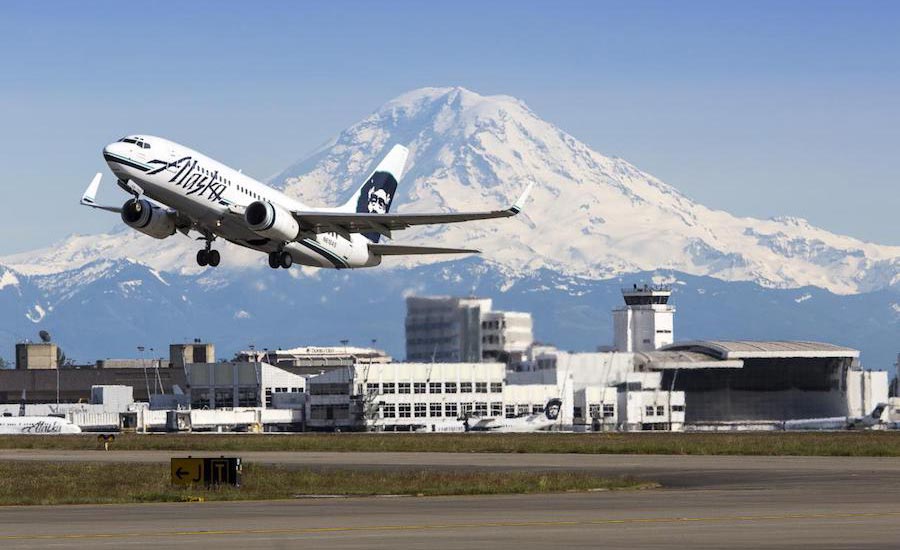Sea-Tac International Airport continues to outgrow its landlocked position in King County, south of Seattle and north of Tacoma. Already at a maxed-out three runways and an ever-expanding nearly 50 million passengers a year that has the airport as the nation’s eighth busiest, Washington State officials are officially moving forward to create sa econd major airport for the Puget Sound.
And this is more than a simple study. A meeting by the state’s Commercial Aviation Coordination Commission on Jan. 9 kicks off 2020 with a concerted effort to narrow down possible sites for this second airport and continue along a plan to have it built and operating by 2040.
First though, comes selecting a new site. The commission has already held one meeting and this second continues the work of researching and discussing the location of the next major commercial airport, narrowing down possible airport sites based on a variety of factors.
The list of six possible airport sites, due Jan. 1 2021, will then get winnowed to two by Sept. 1, 2021.
The commission’s 15 voting and 11 nonvoting members, with representatives spanning aviation and freight to elected officials and private citizens, all supported with technical assistance from the Washington State Dept. of Transportation’s Aviation Division, plans to have a short-list of six potential sites by the end of 2020.
The list of six possible airport sites, due Jan. 1, 2021, will then get winnowed to two by Sept. 1, 2021, and a single location offered by Jan. 1, 2022. This legislation-enacted commission is more than explorative, though, as the state legislation that put this plan in play also calls for the new commercial airport to be operational by 2040.
With Sea-Ta already at 100 percent capacity, growing 8 percent from 2018 over 2017, and with projections to have the Port of Seattle facility handling — on the low end — 66 million passengers by 2034, the 2040 opening of a new airport won’t come soon enough. But fixes have to start somewhere, even with the Port of Seattle spending $6 billion by 2027 to keep expanding the operations of the airport.
Already in March 2019, a privately funded plan turned Boeing’s home Paine Field airport south of Everett — north of Seattle — into a commercial airport for both Alaska Airlines and United Airlines. But the small two-gate, 30,000-square-foot terminal, artificially capped by the Federal Aviation Administration at 24 roundtrip flights per day as per an agreement with Snohomish County neighbors, hasn’t taken much of the sting out of the busyness of Sea-Tac.
The FAA categorizes commercial airports in four major categories of hubs: large, medium, small and non-hub. Sea-Tac is the only large hub in the state and Washington has no medium hubs. With Everett considered a “reliever” airport, the only two small hubs in the state are in Bellingham, near Canada and 108 miles north of Sea-Tac, and Spokane on the eastern edge of Washington, 284 miles from Sea-Tac. The state also has six other much smaller non-hub airports, including Seattle’s Boeing Field, a high-traffic location for freight and private craft.
Just how to go about selecting a site won’t be an easy one to decide. The state has already started and stopped two similar projects in past decades, including as far back as the 1990s.
Still though, as the wide-open search starts, the focus is on the Puget Sound region and locating the airport outside of the heavily congested King County, home of Seattle and Bellevue.
Early discussions have included adding runways to Bremerton National Airport, Paine Field or Arlington Municipal Airport. Discussion of using runway space at the U.S. military’s McChord Filed south of Tacoma would have logistical hurdles with the airport located on Joint Base Lewis-McChord. Of course, building completely new on a “greenfield” site requires plenty of space, likely sending a potential site into Pierce County, somewhere southeast of Tacoma, or rural Thurston County, closer to Olympia than Tacoma or Seattle.
The region’s next largest airports, Portland and Vancouver, B.C., are 160 and 153 miles south and north of Sea-Tac, respectively.
Funding for the new airport would need to come from a combination of federal, state and local money.
In addition to recommending a new primary commercial aviation facility, the commission will recommend additional ways to accommodate capacity needs at other facilities.
Follow Tim Newcomb on Twitter at @tdnewcomb.


Post a comment to this article
Report Abusive Comment